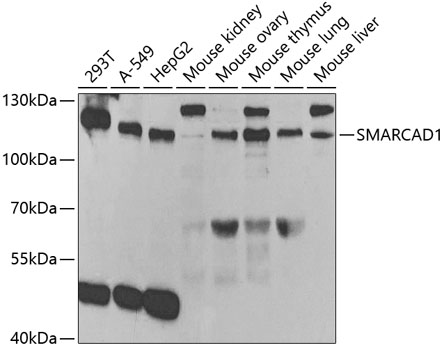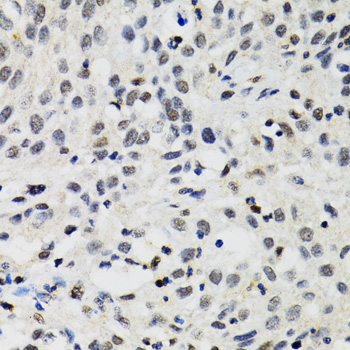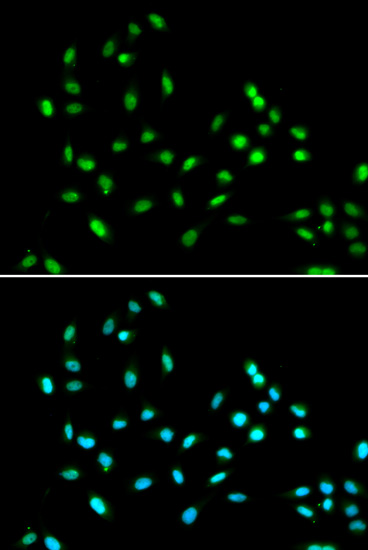-
Product Name
SMARCAD1 Polyclonal Antibody
- Documents
-
Description
Polyclonal antibody to SMARCAD1
-
Tested applications
WB, IHC, IF
-
Species reactivity
Human, Mouse, Rat
-
Alternative names
SMARCAD1 antibody; ADERM antibody; BASNS antibody; ETL1 antibody; HEL1 antibody; SWI/SNF-related matrix-associated actin-dependent regulator of chromatin subfamily A containing DEAD/H box 1 antibody
-
Isotype
Rabbit IgG
-
Preparation
Antigen: Recombinant fusion protein containing a sequence corresponding to amino acids 1-300 of human SMARCAD1 (NP_001121901.1).
-
Clonality
Polyclonal
-
Formulation
PBS with 0.02% sodium azide, 50% glycerol, pH7.3.
-
Storage instructions
Store at -20℃. Avoid freeze / thaw cycles.
-
Applications
WB 1:500 - 1:2000
IHC 1:50 - 1:100
IF 1:50 - 1:100 -
Validations

Western blot - SMARCAD1 Polyclonal Antibody
Western blot analysis of extracts of various cell lines, using SMARCAD1 antibody at 1:1000 dilution.Secondary antibody: HRP Goat Anti-Rabbit IgG (H+L) at 1:10000 dilution.Lysates/proteins: 25ug per lane.Blocking buffer: 3% nonfat dry milk in TBST.Detection: ECL Basic Kit .Exposure time: 90s.

Immunohistochemistry - SMARCAD1 Polyclonal Antibody
Immunohistochemistry of paraffin-embedded human lung cancer using SMARCAD1 antibody at dilution of 1:100 (40x lens).

Immunofluorescence - SMARCAD1 Polyclonal Antibody
Immunofluorescence analysis of A549 cells using SMARCAD1 antibody . Blue: DAPI for nuclear staining.
-
Background
DNA helicase that possesses intrinsic ATP-dependent nucleosome-remodeling activity and is both required for DNA repair and heterochromatin organization. Promotes DNA end resection of double-strand breaks (DSBs) following DNA damage: probably acts by weakening histone DNA interactions in nucleosomes flanking DSBs. Required for the restoration of heterochromatin organization after replication. Acts at replication sites to facilitate the maintenance of heterochromatin by directing H3 and H4 histones deacetylation, H3 'Lys-9' trimethylation (H3K9me3) and restoration of silencing.
Related Products / Services
Please note: All products are "FOR RESEARCH USE ONLY AND ARE NOT INTENDED FOR DIAGNOSTIC OR THERAPEUTIC USE"
